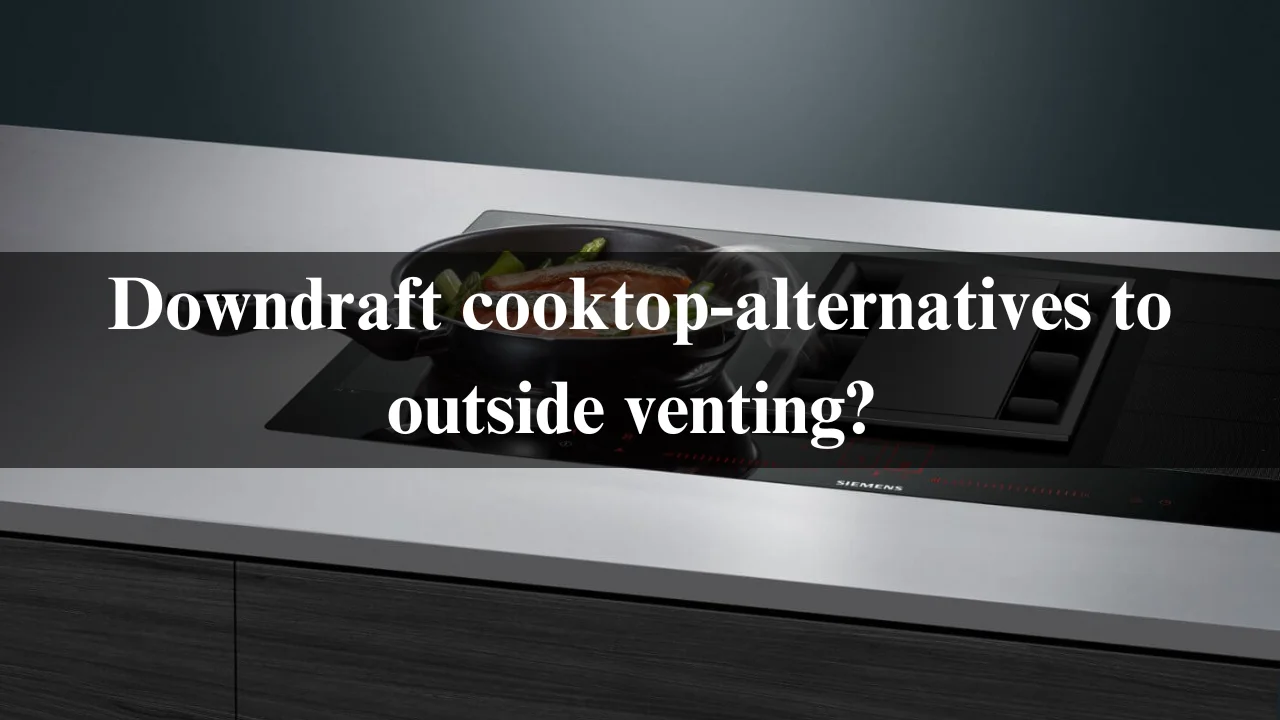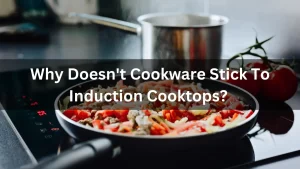Are you dreaming of a sleek kitchen design that doesn’t compromise on functionality? If you’re considering a downdraft cooktop but are unsure about the limitations of outside venting, you’re in the right place! In this blog post, we’ll explore innovative alternatives that not only enhance your cooking experience but also keep your kitchen fresh and stylish.
Say goodbye to bulky hoods and hello to modern solutions that seamlessly blend form with function. Whether you’re renovating or building from scratch, discover how you can achieve optimal ventilation without sacrificing aesthetics. Let’s dive into the world of downdraft cooktops and uncover the smart options available for every culinary enthusiast!
Table of Contents
Introduction to Downdraft Cooktops and Venting Options
When it comes to cooking, the right tools can make all the difference. Downdraft cooktops have surged in popularity, offering an innovative solution for homeowners seeking flexibility without compromising on style or function. These sleek appliances not only provide a smooth surface for meal prep but also incorporate ventilation systems that pull smoke and odors downwards—ideal for open-concept living spaces where traditional range hoods might clash with your design aesthetic.
However, many wonder about their venting options. Is outside venting the best route? Are there alternatives that can still deliver effective air circulation? Let’s dive into these questions and explore how you can achieve a fresh kitchen atmosphere while enjoying the benefits of a downdraft cooktop.
Why Choose a Downdraft Cooktop?
Downdraft cooktops bring modern convenience to your kitchen. They combine style and functionality, making them a popular choice for many homeowners.
These cooktops are designed to capture smoke, steam, and odors right at the source. This feature is particularly beneficial in open-concept spaces where traditional venting might disrupt the aesthetics.
Space-saving design matters too. Downdraft models eliminate the need for bulky range hoods, creating an uncluttered appearance. With less overhead equipment, your kitchen feels more spacious.
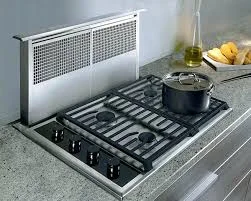
Versatility is another strong point. Downdraft cooktops can fit seamlessly into various countertop materials and styles—offering flexibility in design that appeals to both contemporary and classic tastes.
Cook with confidence knowing you have an efficient ventilation solution without compromising on space or style. They’re perfect if you love cooking but want to maintain a clean atmosphere while doing so.
Traditional Outside Venting vs. Alternatives
Traditional outside venting is the go-to choice for many home cooks. It effectively removes smoke, steam, and odors straight from the kitchen to the outdoors. This method leaves your cooking space fresher and cleaner.
However, installation can be complex. It often requires extensive ductwork that may not suit every home layout. Additionally, it could limit where you place your cooktop due to external wall access.
Alternatives offer flexibility without sacrificing performance. These options are designed for kitchens with unique challenges or those seeking a more straightforward solution.
Recirculating vents pull air through filters before returning it back into the kitchen. They work well in smaller spaces but may require frequent filter changes to maintain efficiency.
Ductless systems provide another layer of convenience by eliminating the need for exterior ducts altogether. Each alternative has its own set of advantages tailored to different lifestyles and preferences in culinary space management.
What are the Pros and Cons of outside venting?
Outside venting offers a direct route for smoke, odors, and moisture to escape your kitchen. This can lead to a fresher cooking environment.
However, installation can be complex. It often requires extensive ductwork that might not fit well in every home layout.
Sound is another factor to consider. Many outside venting systems can be loud during operation, which could disrupt the peace of your culinary space.
Additionally, energy efficiency may suffer when you lose heated or cooled air through vents leading outside. This could raise utility bills over time.
On the flip side, effective airflow helps maintain optimal indoor air quality. Outside venting minimizes the accumulation of grease and cooking residues within your kitchen.
Ultimately, it’s about finding a balance between performance and practicality based on your specific needs and home setup.
What are the alternative options for downdraft venting?
When considering alternatives to traditional outside venting, several options stand out for downdraft cooktops.
Recirculating vents are a popular choice. They filter the air and recirculate it back into your kitchen. This option is effective in reducing odors but may not eliminate smoke entirely.
Ductless vents offer another versatile solution. These systems use filters to clean the air before releasing it back indoors, making them suitable for apartments or spaces where ductwork isn’t feasible.
Retractable vents provide flexibility and aesthetics. They can be hidden when not in use, keeping your kitchen looking sleek while effectively managing smoke and smells during cooking.
Built-in blower systems integrate seamlessly with your cooktop. They draw air through specialized ducts within the unit itself, maintaining efficiency without needing an external vent system.
Each of these alternatives allows you to enjoy a functional cooking space without committing to outside venting solutions.
Recirculating Vents
Recirculating vents are a practical solution for kitchens where traditional outside venting isn’t feasible. These systems work by capturing smoke, steam, and odors before filtering and returning clean air back into the kitchen.
Typically equipped with charcoal filters, recirculating vents effectively remove unwanted particles from the air. This makes them a popular choice in apartments or homes without exterior access points.
Installation is generally straightforward since they don’t require ductwork. A compact design allows them to blend seamlessly into your cabinetry or cooktop setup.
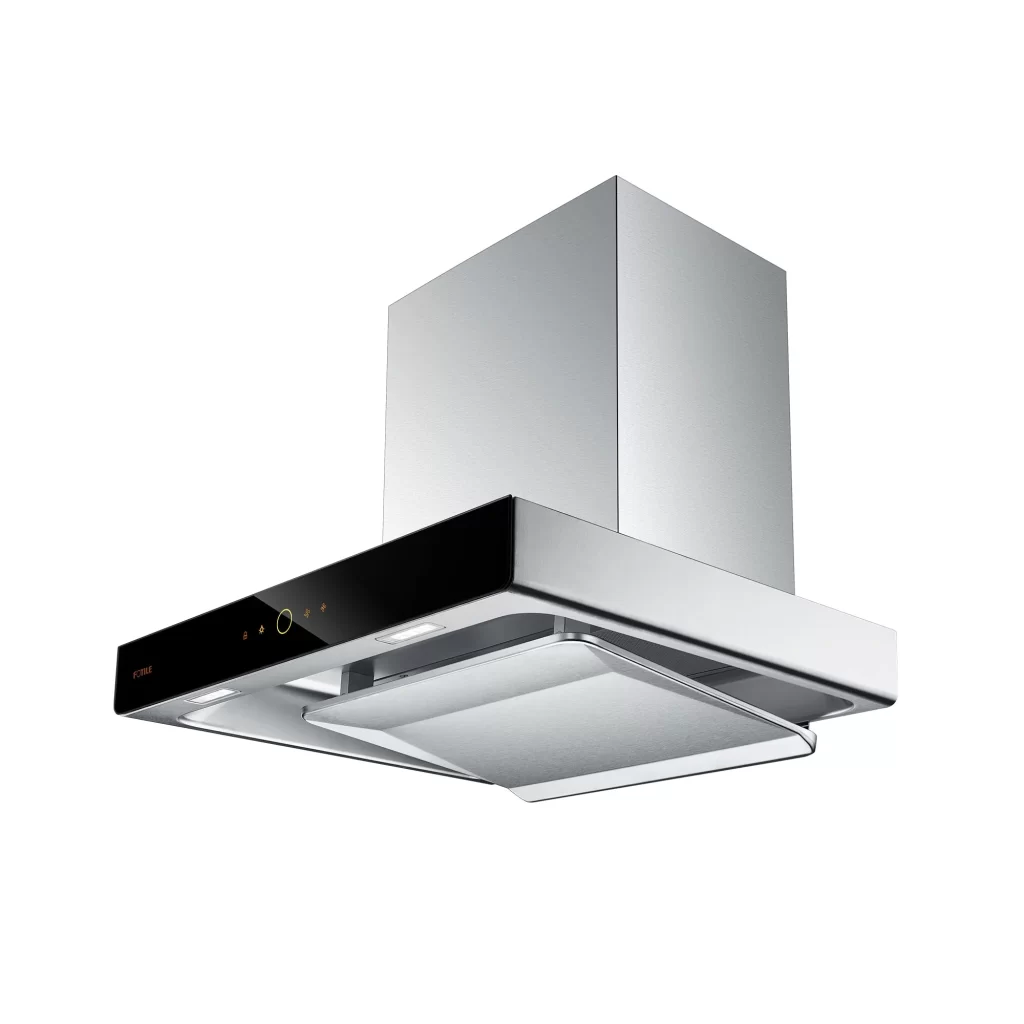
While they may not be as powerful as external venting options, advancements in technology have improved their efficiency significantly. Many modern units are surprisingly effective at managing cooking smells and heat buildup.
Keep in mind that regular filter replacements are essential for optimal performance. With proper care, these vents can enhance your cooking space while maintaining a pleasant atmosphere.
Ductless Vents
Ductless vents are an innovative solution for kitchens without the option of traditional outside venting. These systems work by filtering and recirculating air back into your home, making them a practical choice for many homeowners.
The installation process is relatively straightforward, often requiring minimal modifications to your kitchen. This aspect saves time and can reduce overall labor costs.
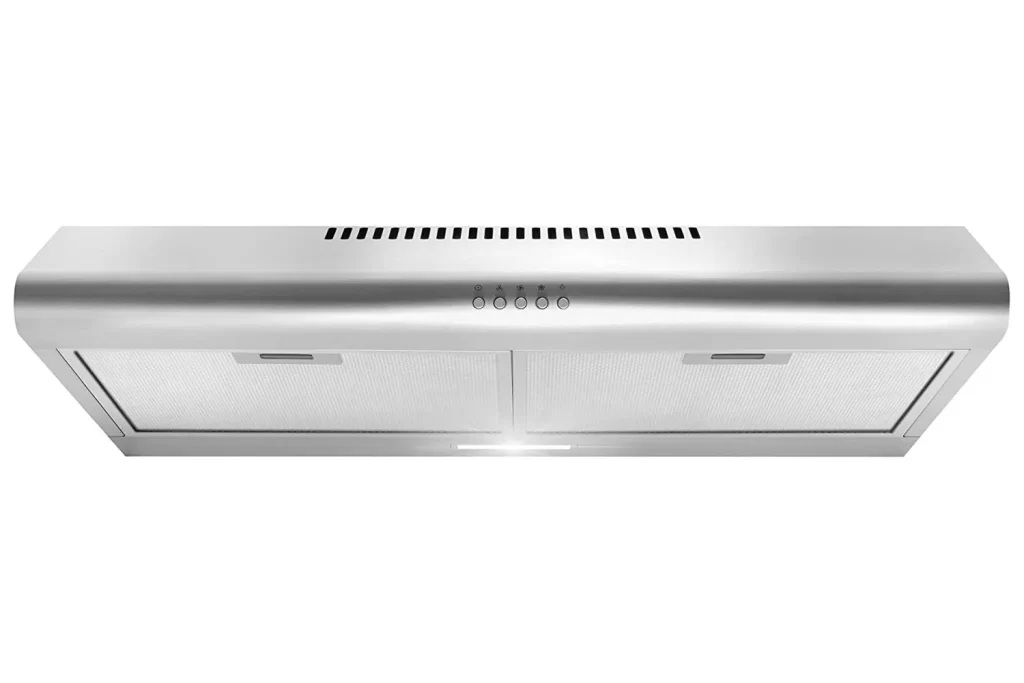
What makes ductless vents particularly appealing is their ability to enhance indoor air quality without the need for external exhaust ducts. They utilize advanced filtration technology to capture smoke, grease, and odors effectively.
Moreover, ductless options come in various styles that can complement any kitchen design. From sleek modern looks to more classic appearances, you have choices that suit both aesthetics and functionality.
Keep in mind maintenance is essential with these systems; regular filter changes ensure optimal performance and longevity.
Retractable Vents
Retractable vents are a clever solution for those who want to maintain a sleek kitchen aesthetic while ensuring efficient ventilation. These innovative systems hide away when not in use, allowing for an unobstructed countertop space.
When it’s time to cook, the vent effortlessly rises from its hiding spot. This design maximizes airflow directly at the source of steam and odors, making cooking more pleasant.
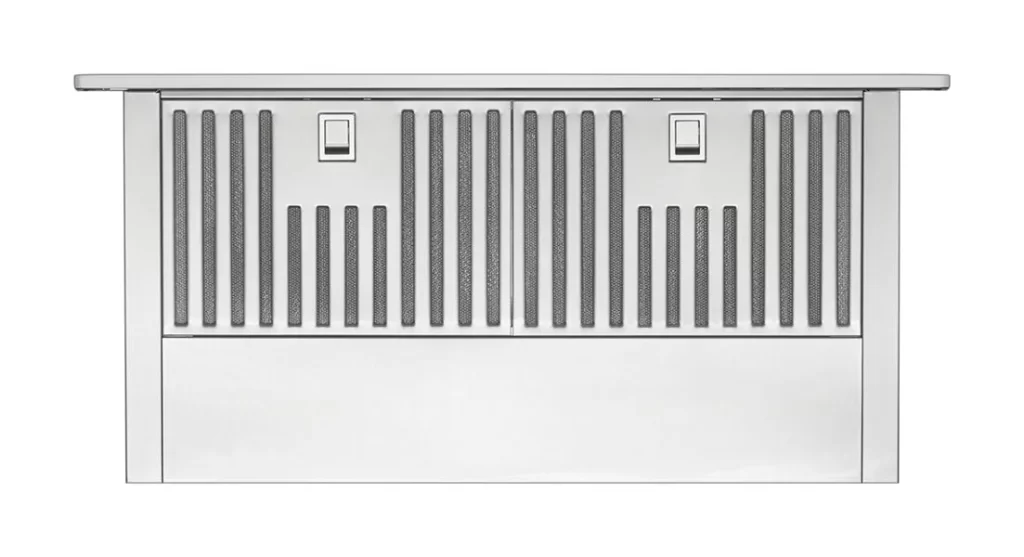
Installation is often straightforward, fitting seamlessly into various cabinetry styles. Adjustability is another perk; you can control the height based on your needs.
One thing to consider is maintenance. Since these vents retract and are exposed during operation, keeping them clean requires regular attention. Nonetheless, they offer both functionality and style—ideal for modern kitchens aiming for minimalism without sacrificing performance.
Built-in Blower Systems
Built-in blower systems provide a sleek and efficient way to manage kitchen air quality. Unlike traditional hoods, these systems integrate directly with your cooktop, maintaining an attractive aesthetic.
These blowers work by drawing in smoke, steam, and odors right at the source. This means less mess and improved ventilation without sacrificing design. They can be particularly beneficial in open-concept kitchens where airflow is crucial.
The installation process can vary based on your specific model but typically involves minimal disruption compared to full ductwork installations.

Another advantage is noise reduction; many built-in blowers operate quietly while still delivering powerful performance. With advanced technology, you can often adjust speed settings tailored to your cooking needs.
Additionally, they pair well with downdraft cooktops, creating a cohesive look that enhances functionality without bulky hardware cluttering the space around you.
How to Choose the Right Venting Option for Your Kitchen?
Choosing the right venting option for your kitchen depends on various factors. Start by assessing your space constraints. A compact kitchen may benefit from a downdraft system or ductless vents that save room.
Consider cooking habits too. If you often fry or cook with strong spices, a powerful exhaust might be necessary to eliminate odors and smoke effectively.
Look into noise levels as well; some systems operate quietly while others can be quite loud during use.
Efficiency is another critical aspect. Research energy ratings and airflow capabilities to ensure optimal performance without impacting your utility bills significantly.
In last, think about aesthetics. Venting options come in different styles that can complement your kitchen design while still providing functionality. Balancing these elements will guide you toward the ideal solution tailored for your needs and preferences.
Installation Tips and Tricks for Non-Venting Options
When installing non-venting options for your downdraft cooktop, precision is key. Start by ensuring a proper fit in the designated space. Measure twice to avoid any costly mistakes.
Consider the power source. Non-venting systems often require electricity, so having an accessible outlet nearby can simplify installation significantly.
Each system has specific requirements that help optimize performance and safety.
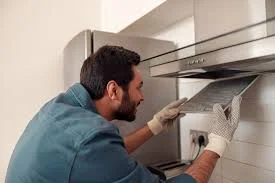
Prioritize accessibility during installation as well. You’ll want easy access for maintenance down the line, which includes cleaning filters or making necessary adjustments.
Take note of your kitchen’s overall design too; aesthetics matter. Choose finishes that blend seamlessly with your cabinetry and countertops while providing functionality.
Lastly, don’t hesitate to seek professional assistance if needed! A little expert help can make all the difference in achieving a flawless setup for your new cooking space.
Maintenance and Cleaning for Downdraft Cooktops without Outside Venting
Maintaining a downdraft cooktop is essential for optimal performance, especially when you aren’t using outside venting. Regular cleaning helps prevent buildup of grease and grime that can affect airflow.
Start by wiping down the cooktop surface after each use. A simple mix of warm water and mild soap works wonders. Avoid abrasive cleaners to protect the finish.
Focus on the downdraft vents as well. Remove any filters according to your model’s instructions and clean them regularly—this ensures they remain effective in trapping smoke and odors.
Every few months, check beneath the cooktop for accumulated debris or dust. A quick vacuum can make a significant difference in efficiency.
Lastly, remember to inspect all components periodically. Ensuring everything is functioning correctly will extend the life of your appliance while keeping your kitchen fresh.
What are Recirculating Ventilation Systems?
Recirculating ventilation systems are an increasingly popular alternative to traditional outside venting for downdraft cooktops. These systems work by pulling the air through a filter and then recirculating it back into the kitchen, rather than venting it outside. This allows for greater flexibility in kitchen design and eliminates the need for ductwork installation. In this section, we will explore the benefits and considerations of using a recirculating ventilation system with your downdraft cooktop.
One of the main benefits of a recirculating ventilation system is its versatility in kitchen design. With traditional venting, homeowners are limited in where they can place their cooktop due to the need for an external vent. However, with a recirculating system, you have more options as there is no need for external ductwork. This allows for more creative designs and layouts in your kitchen, giving you greater control over your space.
In addition to its flexibility in design, a recirculating ventilation system also offers convenience and cost savings. As there is no need for ductwork installation or ongoing maintenance, these systems can be more budget-friendly compared to traditional venting methods. They also do not require any changes to your home’s exterior or roofline, making them ideal for apartments or rental properties.
Another important consideration when choosing between outside venting and a recirculating system is energy efficiency. By eliminating the need to constantly heat or cool incoming air from outside, these systems can help save on energy costs in both hot and cold climates. This not only benefits your wallet but also reduces your carbon footprint.
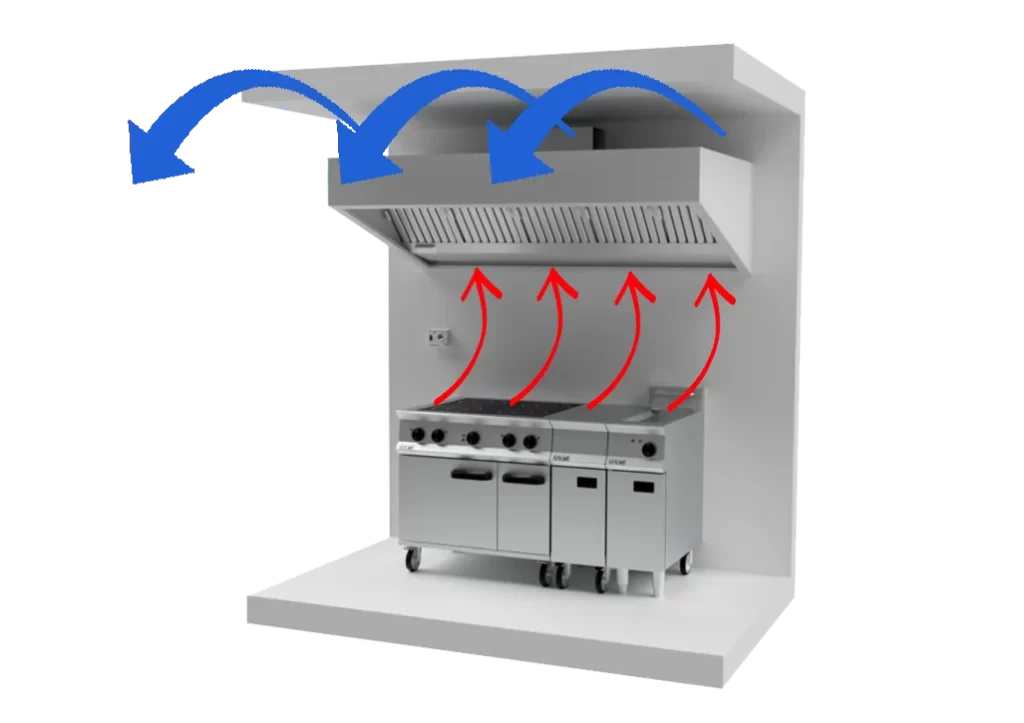
However, it is important to note that while recirculating ventilation systems offer many advantages, they do have some limitations that should be taken into account before making a decision. One major drawback is their effectiveness at removing odors and smoke from cooking. While filters do help trap particles and eliminate some odor-causing substances, they may not be as effective as an external vent at removing all cooking odors. This is especially important to consider if you frequently cook with strong-smelling or greasy foods.
Additionally, the filters in recirculating systems need to be regularly replaced or cleaned to maintain their efficiency. The frequency of this maintenance will depend on your cooking habits and the type of filter used, so it is essential to factor in the cost and effort of upkeep when choosing a recirculating system.
Recirculating ventilation systems offer a convenient and cost-effective alternative to outside venting for downdraft cooktops. With their versatility in design, energy efficiency, and ease of installation, they can be a great option for many homeowners. However, it is crucial to weigh both the benefits and limitations before deciding if they are the right choice for your kitchen.
Recirculating Ventilation System Comparison
| Feature | Recirculating System |
| Installation Complexity | Easy |
| Maintenance | Regular Filter Replacement |
| Odor Removal | Moderate |
What are Downdraft Cooktops with Built-In Air Purifiers?
Downdraft cooktops with built-in air purifiers are a revolutionary kitchen appliance that combines the functionalities of a traditional cooktop and an air purifier. These innovative devices not only provide efficient and convenient cooking options, but also contribute to creating a healthier indoor environment.
One of the biggest challenges with traditional cooktops is dealing with the smoke, fumes and odors that are generated while cooking. While most homes have external venting systems in place, not all kitchens have access to it due to various structural limitations. This is where downdraft cooktops with built-in air purifiers come into play.
These cooktops feature powerful fans and filters that effectively capture and eliminate smoke, steam, grease particles and other cooking by-products directly from the source – the cooking surface itself. The downdraft system draws in contaminated air from above the burners and pushes it down through ductwork located under or behind the cooktop. The polluted air then goes through multiple filtration stages before being released back into your kitchen as clean, purified air.
The most common type of filter used in downdraft cooktops is a mesh or baffle filter made of aluminum or stainless steel. These filters trap larger particles like grease, while allowing smaller particles to pass through for further filtration. Some models also include additional charcoal filters which utilize activated carbon to absorb odors and other harmful substances present in the air.
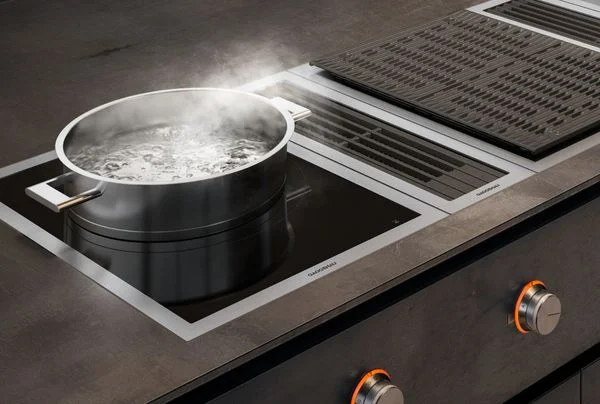
In addition to their exceptional performance in removing cooking pollutants, downdraft cooktops with built-in purifiers offer convenience and flexibility in terms of installation options. Unlike traditional venting systems that require extensive modifications to your kitchen’s structure, these units can be easily installed on any countertop without any major renovations.
Moreover, these appliances come in sleek designs that seamlessly blend into modern kitchen styles without taking up much space. They also offer versatile placement options – you can install them on islands or peninsulas where traditional venting is usually not possible, or even use them as a standalone unit.
Downdraft cooktops with built-in air purifiers are the perfect solution for homeowners who want to enjoy the benefits of an efficient cooktop without the hassle and limitations of traditional venting systems. With their superior performance, ease of installation and stylish design, these appliances are definitely worth considering for your kitchen upgrade.
Air Purifier Cooktop Comparison
| Feature | Air Purifier Cooktop |
| Initial Cost | High |
| Air Cleaning Efficiency | High |
| Maintenance | Low |
What Are Hybrid Venting Systems?
Hybrid venting systems are a relatively new innovation in the world of kitchen ventilation. They are designed to provide an effective and efficient way to remove smoke, odor, and other pollutants from your kitchen while also offering the convenience of not needing any outside venting.
Traditional downdraft cooktops typically require an external vent to be installed, which can be quite costly and time-consuming. This is where hybrid venting systems come in – they offer a solution that eliminates the need for a traditional external vent by combining the best features of both downdraft and recirculating ventilation systems.
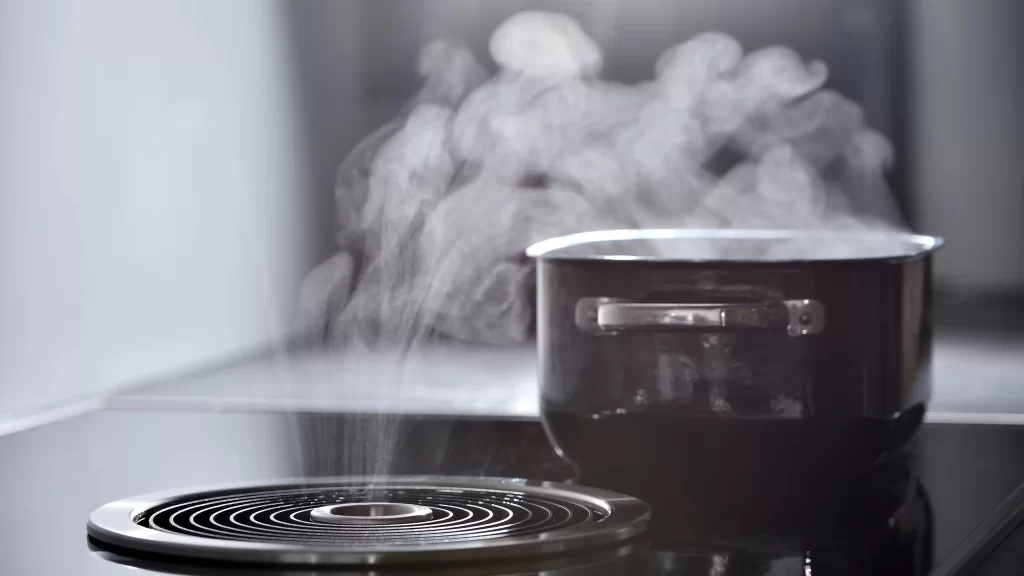
So how does it work? Hybrid venting systems use a combination of downdraft ventilation, which pulls air down through the cooktop surface, and recirculation technology, which filters and purifies the air before releasing it back into your kitchen. This creates a closed loop system that effectively removes smoke, grease, and odors from your cooking space without the need for an external vent.
One of the main advantages of hybrid venting systems is their flexibility in installation. They can be easily retrofitted into existing kitchens or incorporated into new kitchen designs without requiring major renovations. This makes them a great option for those who want to upgrade their cooking appliances but don’t have the ability to install an external vent.
Another benefit of hybrid venting systems is their effectiveness in removing pollutants from your kitchen. The combination of downdraft and recirculating technologies allows these systems to capture more grease particles than traditional vents while also reducing cooking odors significantly.
In addition to their efficiency in removing pollutants, hybrid venting systems also offer convenience and ease of use. They come with multiple speed settings that allow you to adjust the fan according to your needs – low-speed settings for simmering or high-speed settings for heavy-duty cooking. Some models even come with remote controls or touch screens for added convenience.
It’s important to note that while hybrid venting systems are a great alternative to traditional outside venting, they may not be suitable for all kitchens. If you do a lot of heavy-duty cooking or have a large kitchen with high ceilings, a hybrid venting system may not be powerful enough to effectively remove all pollutants. In such cases, it’s best to consult with an expert before making a decision.
Hybrid venting systems offer an excellent solution for those looking for alternatives to traditional outside venting. They provide effective ventilation without the need for major renovations and offer convenience and flexibility in use. However, it’s essential to assess your specific kitchen needs before investing in one to ensure it is the right fit for your space.
| Feature | Hybrid System |
| Installation Flexibility | High |
| Cost | Moderate to High |
| Maintenance | Variable |
Heat Recovery Ventilators (HRVs)
Heat Recovery Ventilators (HRVs) are a popular alternative to traditional outside venting systems for downdraft cooktops. These innovative systems are designed to efficiently and effectively remove cooking odors, excess humidity, and other indoor pollutants from your kitchen space.
HRVs work by using a heat exchanger to transfer the heat from the outgoing air to the fresh incoming air. This not only helps maintain a comfortable temperature in your home, but it also reduces energy costs by preheating the incoming air during colder months. The HRV system is connected to an exhaust vent that is installed in the ceiling or wall above the cooktop, allowing for easy installation without having to cut through cabinets or walls like with traditional ducted range hoods.
One of the main benefits of using HRVs is their ability to improve indoor air quality. Cooking can release harmful pollutants into the air such as carbon monoxide and nitrogen dioxide, which can have negative effects on our health. With an HRV system, these pollutants are quickly removed from your kitchen space, creating a healthier and more comfortable environment for you and your family.
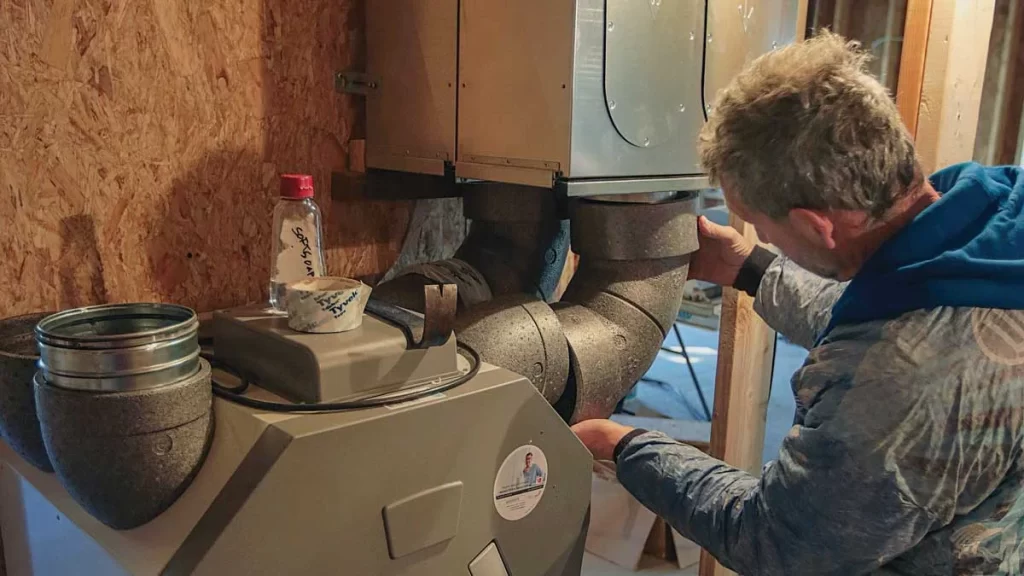
In addition, HRVs also help reduce excess moisture that can build up in the kitchen when cooking. This moisture can lead to mold growth and musty odors if not properly ventilated. By removing excess humidity through continuous ventilation with an HRV system, you can prevent these issues from occurring and keep your kitchen free of unwanted odors.
Another advantage of using an HRV system is its quiet operation compared to traditional range hoods. Since there are no fans involved in moving air out of your home, there is significantly less noise produced by these systems. This makes them ideal for open concept living spaces where loud exhaust fans can be disruptive.
When considering installing an HRV system for your downdraft cooktop, it’s important to note that regular maintenance is required to ensure optimal performance. The filters need to be cleaned or replaced periodically, and the system should be inspected for any potential issues. However, the benefits of improved air quality and energy efficiency make these maintenance tasks well worth it.
HRVs are a great alternative to outside venting for your downdraft cooktop. They provide efficient ventilation, improve indoor air quality, reduce excess moisture, operate quietly, and save on energy costs. With their easy installation and low maintenance requirements, HRVs are a smart choice for anyone looking to upgrade their kitchen ventilation system.
Heat Recovery Ventilator Benefits
| Feature | HRV |
| Energy Efficiency | High |
| Cost | High |
| Space Requirement | Significant |
Related Articles:
Why Are Ranges With Downdraft Exhaust Vents So Expensive?
Are Cooktops With Integrated Downdraft Ventilation Any Good?
Do downdraft cooking vents work? Latest Update 2024
How Effective Are Downdraft Vents In The Kitchen? 2024
Are Downdraft Extractors More Effective In 2024?
Conclusion
In conclusion, downdraft cooktops offer a sleek and space-saving ventilation solution for modern kitchens, with several alternatives to traditional outside venting. Whether opting for recirculating vents, ductless systems, retractable vents, or built-in blower systems, each option provides flexibility in design and functionality. While outside venting may be more effective for eliminating odors and smoke, these alternatives offer practical solutions for homes with installation limitations. Choosing the right venting system depends on your cooking habits, kitchen layout, and maintenance preferences.
FAQs
1. What is the best alternative to outside venting for a small kitchen?
For a small kitchen, a recirculating ventilation system or a downdraft cooktop with a built-in air purifier might be ideal due to their compact nature and ease of installation.
2. How often do I need to replace filters in a recirculating system?
Filters in recirculating systems typically need to be replaced every 6-12 months, depending on usage and manufacturer recommendations.
3. Are hybrid venting systems worth the investment?
Hybrid systems can be worth the investment if you need flexibility and want the option to switch between recirculating and external venting. They can be particularly useful in complex kitchen setups.
4. Can I install a heat recovery ventilator myself?
While some DIY enthusiasts may attempt installation, it’s generally recommended to have an HRV professionally installed to ensure optimal performance and compliance with local codes.

